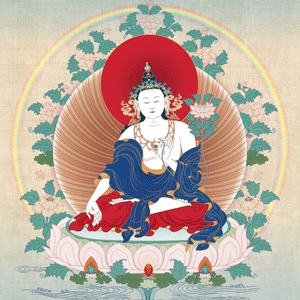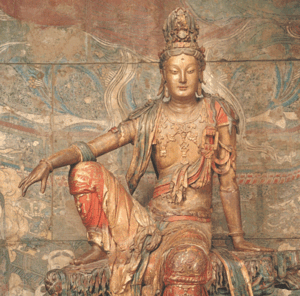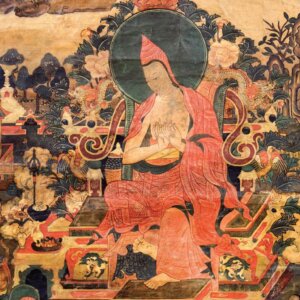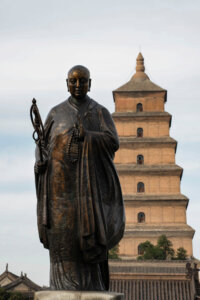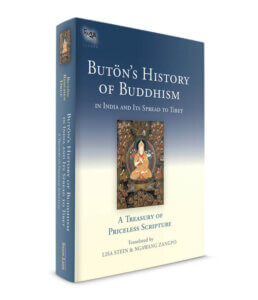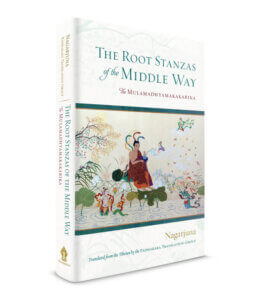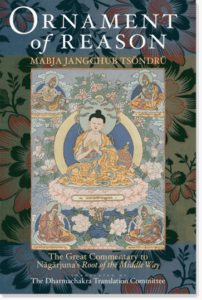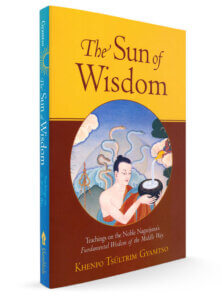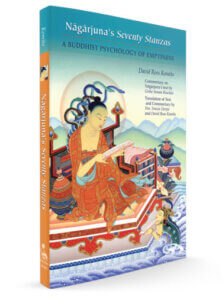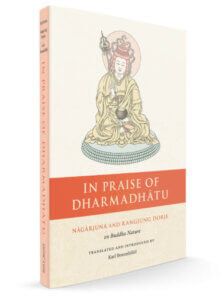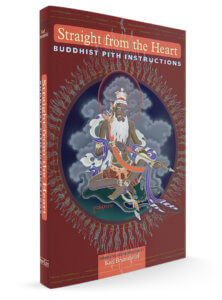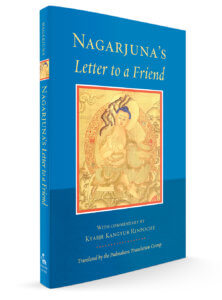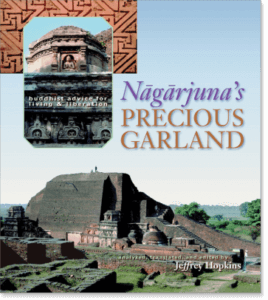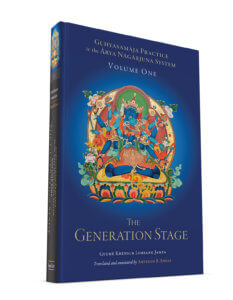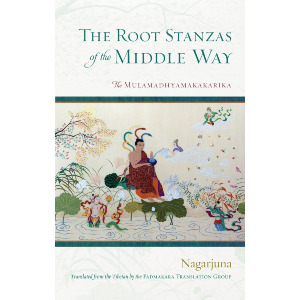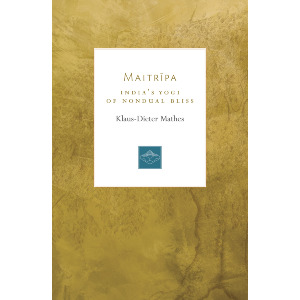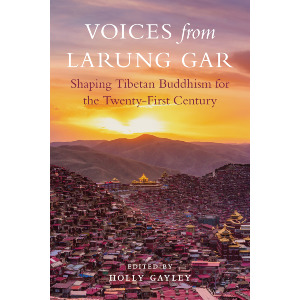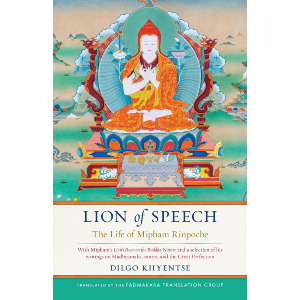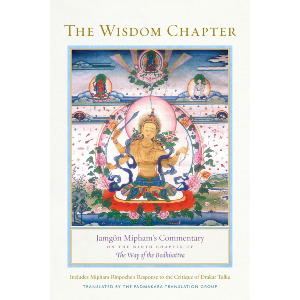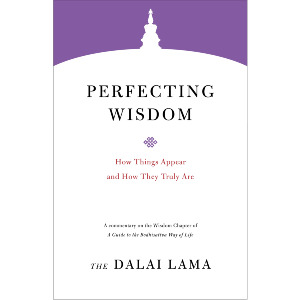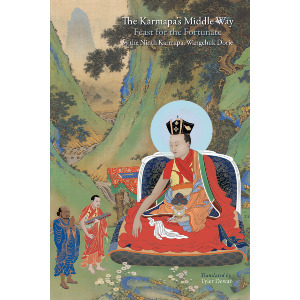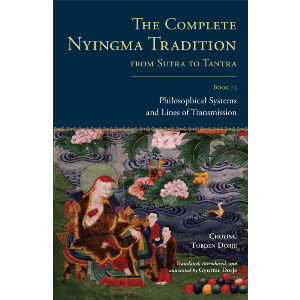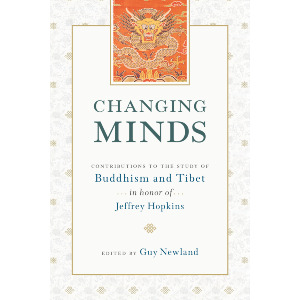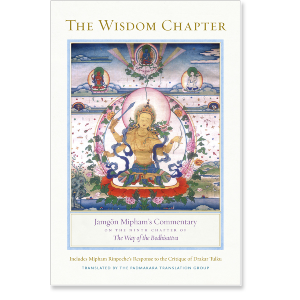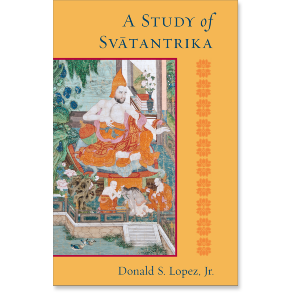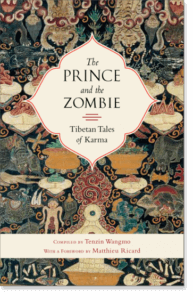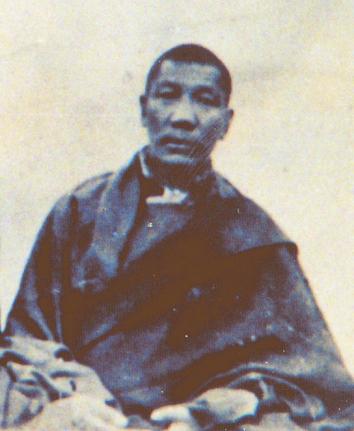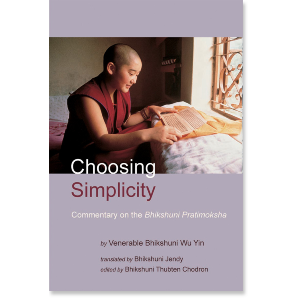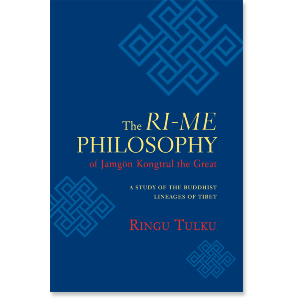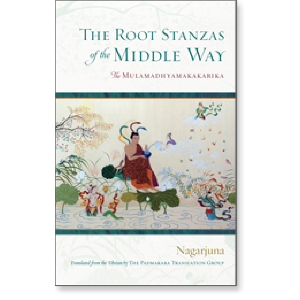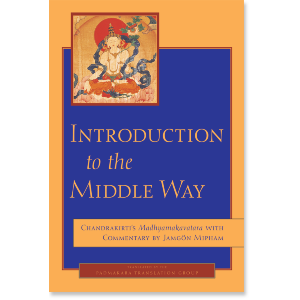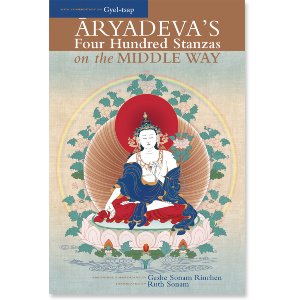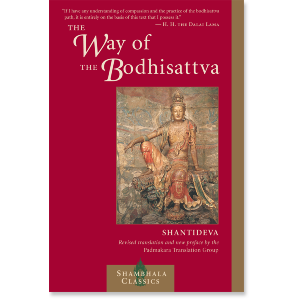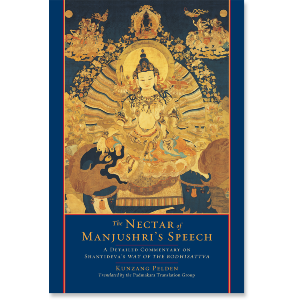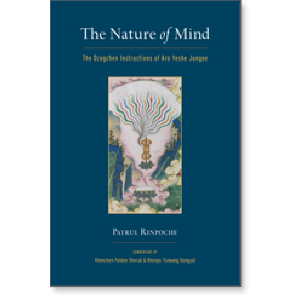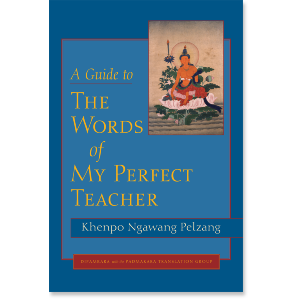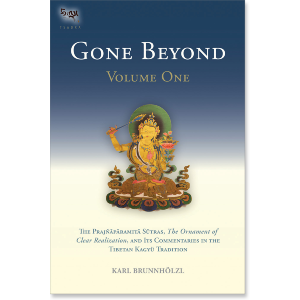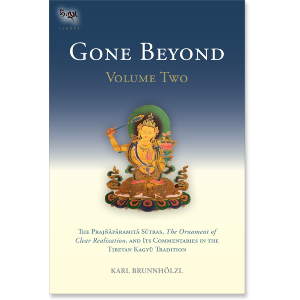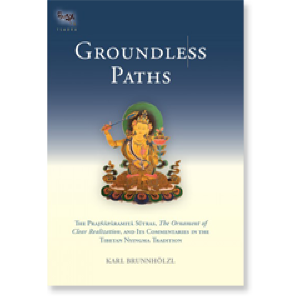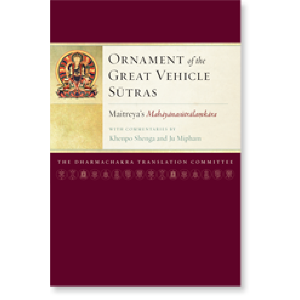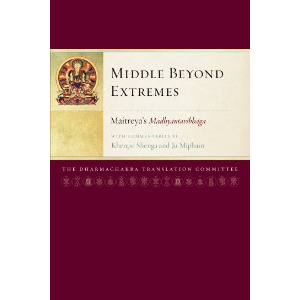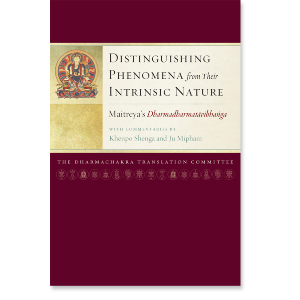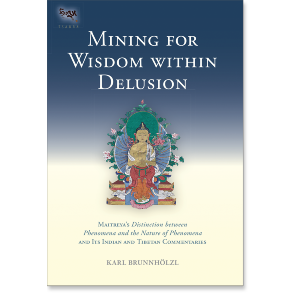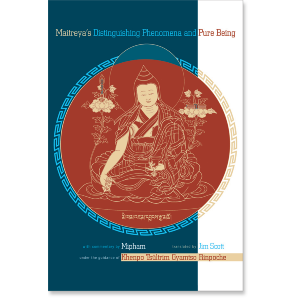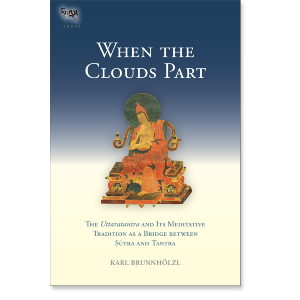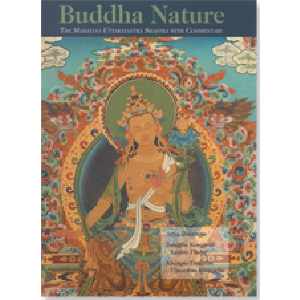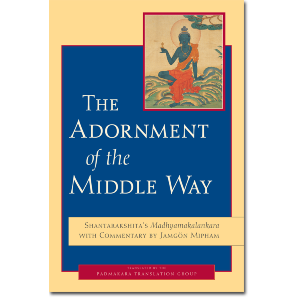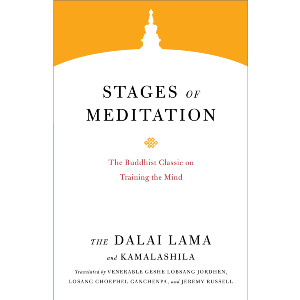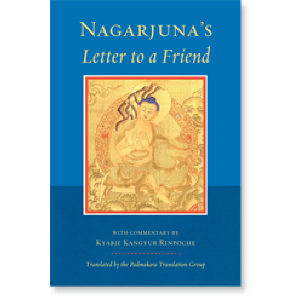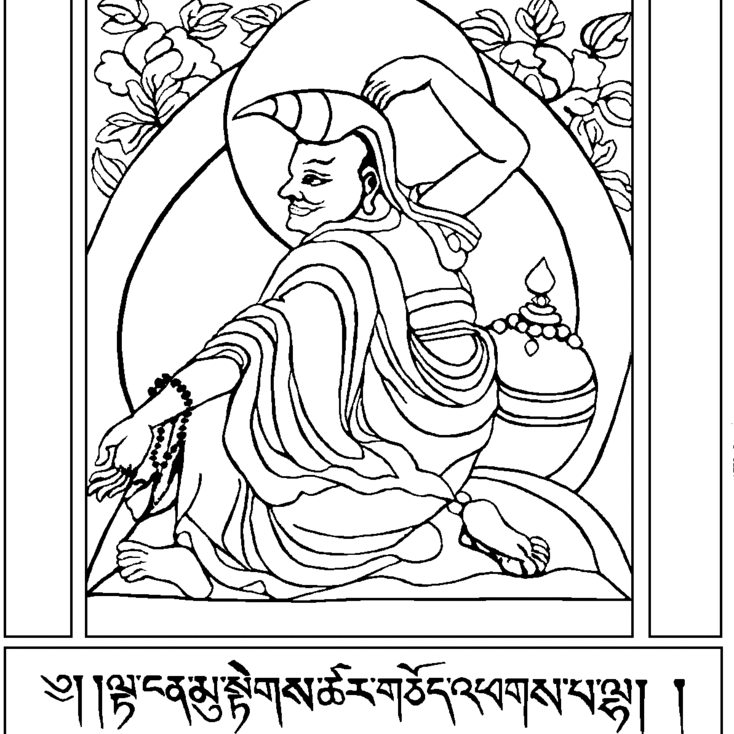

Aryadeva
Aryadeva was a disciple of Nagarjuna and author of several important Madhyamaka Buddhist texts.
-
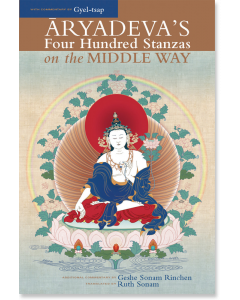 Aryadeva's Four Hundred Stanzas on the Middle Way$39.95- Paperback
Aryadeva's Four Hundred Stanzas on the Middle Way$39.95- PaperbackBy Aryadeva
By Gyel-tsap
By Geshe Sonam Rinchen
Translated by Ruth Sonam
GUIDES
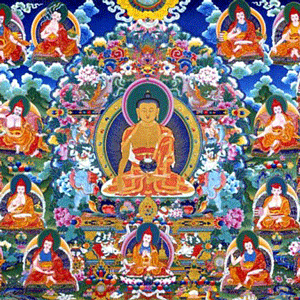
Indian Mahayana Masters of the 2nd-8th Centuries

The Indian Masters
Indian Mahayana Masters from the 2nd-8th Centuries
The Tibetan traditions all look back to India as the source of wisdom. There were countless masters all over India, north and south, east (including present-day Bangladesh) and west (including present-day Pakistan). The Mahayana reached its full expression during this period, and what follows is a partial but growing list of Reader Guides to these masters.
The Seventeen Pandits of Nalanda
2nd through 11th centuries
Tibetan Buddhism is none other than the Buddhism of India in the tradition of Nalanda, the great center of Buddhist learning that was located in present-day Bihar, India. There are seventeen great scholars profiled here, including Nagarjuna, Aryadeva, Asanga, Vasabandhu, Buddhapalita, Dignaga, Bhavaviveka, Vimuktisena, Chandrakirti, Dharmakirti, Shantideva, Shantarakshita, Kamalashila, Haribhadra, Gunaprabha, Shakyaprabha. and Atisha.
Nagarjuna
(2nd century....and beyond)
The great master closely associated with the Perfection of Wisdom
Shantideva and the Way of the Bodhisattva
8th century
The great master Shantideva is the author of two very important texts. The first is the Śikṣāsamuccaya, or Training Anthology which is a compilation of many works. The second is the Bodhicharyavatara, or Way of the Bodhisattva. This Reader Guide focuses on the latter work.
Asanga
4th century
The great Mahayana figure who is a key explicator of Yogacara, and also received the Five Maitreya texts from Maitreya.
Xuanzang (602-664 CE)
7th century
While not an Indian master, we wanted to include Xuanzang, certainly one of the most important figures in Buddhist history. His 16 year pilgrimage from his home in China throughout the Buddhist world is almost The Odyssey of the Buddhist literature. His translation and preservation of texts, as well as the account of his journey, had come down to us through the ages and is well worth a deep exploration.
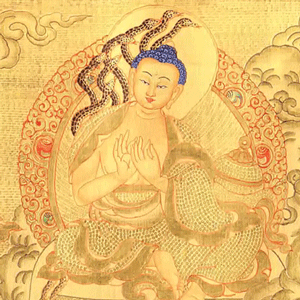

Nagarjuna
Nagarjuna
circa 150 – c. 250 CE
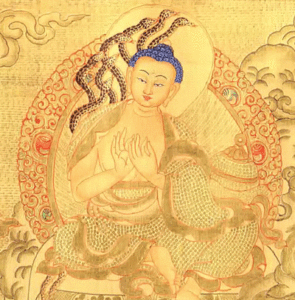
Of Nagarjuna’s life, we know almost nothing. He is said to have been born into a Brahmin family in the south of India around the beginning of the second century CE. He became a monk and a teacher of high renown and exerted a profound and pervasive influence on the evolution of the Buddhist tradition in India and beyond. Much of his life seems to have been spent at Sriparvata in the southern province of Andhra Pradesh, at a monastery built for him by king Gotamiputra, for whom he composed the Suhrllekha, his celebrated Letter to a Friend.
Nagarjuna is intimately associated with the Prajnaparamita sutras, the teachings on the Perfection of Wisdom, the earliest-known examples of which seem to have appeared in written form around the first century BCE, thus coinciding with the emergence of Mahayana, the Buddhism of the Great Vehicle.
It is recorded in the Pali Canon that the Buddha foretold the disappearance of some of his most profound teachings. They would be misunderstood and neglected, and would fall into oblivion. “In this way,” he said, “those discourses spoken by the Tathāgata that are deep, deep in meaning, supramundane, dealing with emptiness, will disappear.” There is no knowing whether on that occasion he was referring to the Perfection of Wisdom, but it is certain that the earliest exponents of the Mahayana believed that, with the Prajnaparamita scriptures, they were recovering a profound and long-lost doctrine. Nagarjuna seems to have been deeply implicated in this rediscovery. Questions of historicity aside, the story that he brought back seven volumes of the Prajnaparamita sutras from the subterranean realm of the nagas, where they had been preserved, conveys a clear message. In the eyes of Nagarjuna’s contemporaries and of later generations, the appearance of the Prajnaparamita sutras marked a new beginning in the history of Buddhism, and yet the teachings they contained were not innovations. And in their interpretation and propagation, Nagarjuna played a crucial role.
-Excerpted from the "Translator's Preface," The Root Stanzas of the Middle Way translated by Padmakara Translation Group
Jump to sections on this page:
Nagarjuna's Life | Madhayamaka & Reasoning | Praises
Advice | Tantra | Recent Works on Madhyamaka | Other Works and Resources

Nagarjuna's Life
A more comprehensive biography of Nagarjuna can be found in Butön's History of Buddhism in India and Its Spread to Tibet. A fourteenth-century Tibetan classic that serves as an excellent introduction to basic Buddhism as practiced throughout India and Tibet and describes the process of entering the Buddhist path through study and reflection.
What follows is a brief composite biography from a variety of sources including Butön Rinchen Drup's biography of Nagarjuna.
Overcoming his fated death
Nagarjuna was born to a Brahmin family in Vidarbha in present-day Maharashtra, India. Predicted to have a short life, he avoided an early demise by taking ordination at Nalanda monastery with Rahulabhadra, identified in some accounts as being the mahasiddha Saraha and in others as being the abbot of Nalanda; regardless, he is best known for his works in praise of Prajñaparamita. With an ordination name of Sriman, Nagarjuna undertook thorough studies of Buddhist teachings and became successful in defeating both Buddhists and non-Buddhists in debate.
Prajñaparamita sutras
Several nagas heard Sriman's teaching and subsequently invited him down into their realm, from which he later brought back special naga clay that was used in the construction of many temples and stupas. He also brought back, most famously, important Prajñaparamita sutras. Thenceforth he became known as Nagarjuna.
Butön describes the meaning of the name beautifully:
Naga signifies birth from the basic space of phenomena, abiding in neither the extreme of eternalism or nihilism, mastery over the vault of precious scriptures, and being endowed with the view that burns and illuminates. Arjuna signifies one who has procured worldly power. Thus, he is named Arjuna because he governs the kingdom of the doctrine and subdues the hosts of faulty enemies. Taken together, these two parts form the name "Nagarjuna."
Nagarjuna's activities were vast; his better-known accomplishments include the building of two structures in Bodhgaya- the stone fence around the Vajra Seat beneath the Bodhi tree and the stupa that sits atop the Mahabodhi Temple - as well as the wall around the great Dhanyakataka Stupa at Amaravati in present-day Andhra Pradesh.
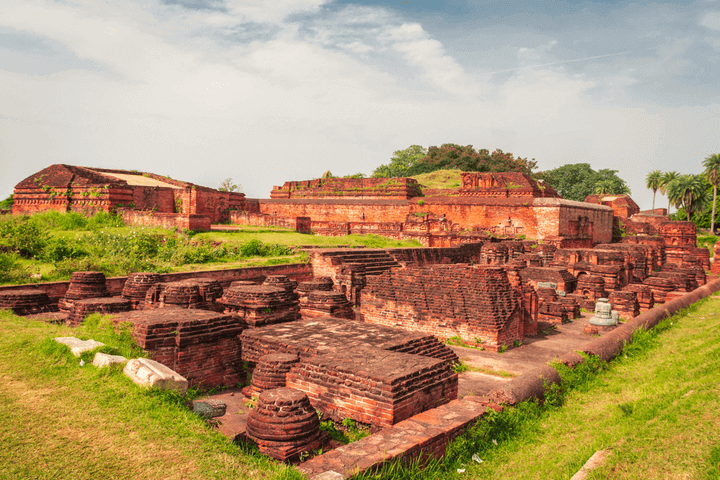
Karma at work
Nagarjuna passed away when he offered his head to a greedy prince who thought he could ensure his own long life by killing Nagarjuna. No blade would cut Nagarjuna, but he told the prince that in a past life he had killed an insect with a blade of kusha grass, so his head could be cut off with a blade of that grass which the prince then did.
It is believed that Nagarjuna's head and body were separated but do not decay and over time move closer together. Once they rejoin, his activity will continue.
Nagarjuna's Texts
The Tibetan Tengyur ascribes about one hundred eighty texts on both the sutras and tantras to him. There is a lot of scholarly debate about what Nagarjuna did and did not actually write, which is outside the scope of this article. Instead, we will focus on the major works widely attributed to him that are available in English.
His treatises are divided in various ways. Mabja Jangchub Tsondru divides them into three groups:
- Those belonging to the Causal Vehicle of Characteristics
- Those belonging to the Resultant Vehicle of Secret Mantra
- Those that show the two above to be identical in meaning
A bit arbitrarily, we will follow another traditional division which groups the treatises as follows: works on reasoning, praises, and advice. This schema ignores the large body of work on tantra and medicine, but most of what is available in English is included in these three groupings.
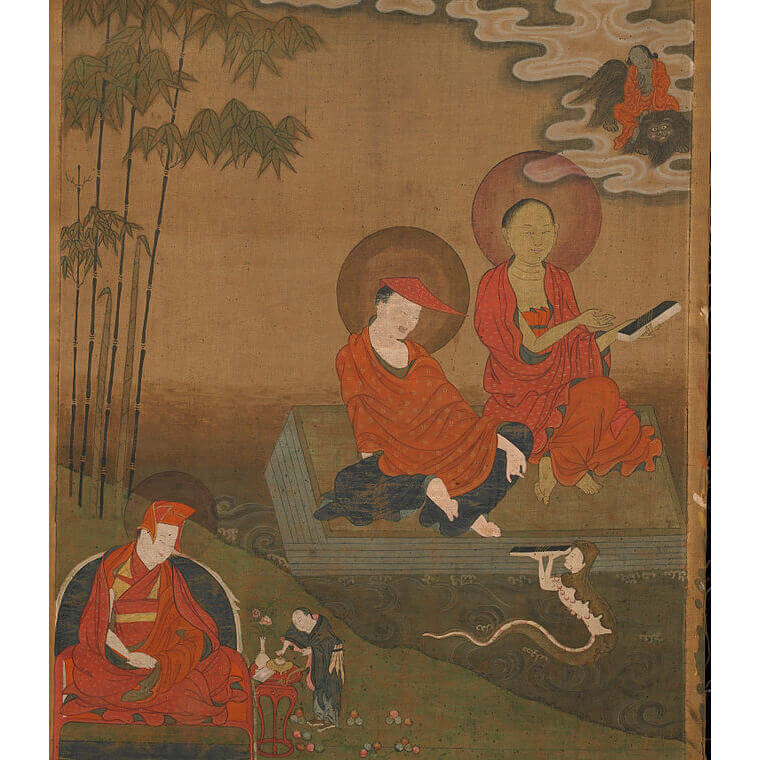
Nagarjuna on Madhyamaka & Reasoning
To him who taught that things arise dependently,
Not ceasing, not arising,
Not annihilated nor yet permanent,
Not coming, not departing,
Not different, not the same:
The stilling of all thought, and perfect peace:
To him, the best of teachers, perfect Buddha, I bow down.
The above verse is from Nagarjuna's famed Root Stanzas of the Middle Way—by far his most widely studied text.
The Root Stanzas of the Middle Way
This volume presents a new English translation of the founding text of the Madhyamaka (Middle Way) school of Mahayana Buddhism, Nagarjuna’s Root Stanzas of the Middle Way (Mulamadhyamakakarika) and includes the Tibetan version of the text. The Root Stanzas holds an honored place in all branches of Tibetan Buddhism, as well as in the Buddhist traditions found in China, Japan, and Korea, because of the way it develops the seminal view of emptiness (shunyata), which is crucial to understanding Mahayana Buddhism and central to its practice. It is prized for its pithy and pointed arguments that show that things lack intrinsic being and thus are “empty” (shunya). They abide in the Middle Way, free from the extremes of permanence and annihilation.
This translation was done following the commentary by Mipham Rinpoche, thus appealing to a living tradition that stretches back unbroken to the Tibetan translators and through their Sanskrit mentors to Nagarjuna himself.
The present work contains Nagarjuna's verses on the Middle Way accompanied by Mabja Jangchub Tsöndrü's famed commentary, the Ornament of Reason. Active in the twelfth century, Mabja was among the first Tibetans to rely on the works of the Indian master Candrakirti, and his account of the Middle Way exercised a deep and lasting influence on the development of Madhyamaka philosophy in all four schools of Buddhism in Tibet. Sharp, concise, and yet comprehensive, the Ornament of Reason has been cherished by generations of scholar-practitioners. The late Khunu Lama Tenzin Gyaltsen Rinpoche, a renowned authority on the subject, often referred to this commentary as "the best there is." A visual outline of the commentary has been added that clearly shows the structure of each chapter and makes the arguments easier to follow.
Hardcover | eBook
$27.99 - eBook
Paperback | eBook
$24.95 - Paperback
The Sun of Wisdom: Teachings on the Noble Nagarjuna's Fundamental Wisdom of the Middle Way
by Khenpo Tsultrim Gyamtso
An excellent contemporary commentary on the Mulamadhyamakakarika is Khenpo Tsultrim Gyamtso's The Sun of Wisdom. Focusing on the most important root verses, it is a very accessible entryway into this fundamental but challenging text.
As Khen Rinpoche says,
All the verses in this book are excellent supports for developing your precise knowledge of genuine reality through study, reflection, and meditation. You should recite them as much as possible, memorize them, and reflect on them until doubt-free certainty in their meaning arises within. Then you should recall their meaning again and again, to keep your understanding fresh and stable. Whenever you have time, use them as the support for the practices of analytical and resting meditation. If you do all of this, it is certain that the sun of wisdom will dawn within you, to the immeasurable benefit of yourselves and others.
Paperback | eBook
$27.95 - Paperback
by David Ross Komito and Geshe Sonam Rinchen
Nagarjuna's Shunyatasaptati, or Seventy Stanzas on Emptiness (there are actually seventy-three), is an expansion of the seventh section of the Root Verses, "Analysis of Characteristics of the Conditioned," that addresses some questions people had about the presentation of conditioned phenomena and whether that conflicted with sutra teachings. As is often the case, the answer lies in the difference between the conventional point of view of beings and how things actually are.
Additional Texts on Reasoning by Other Publishers
Of the remaining texts in this category,
- Nagarjuna's Yuktisastika, or Sixty Verses on Reasoning, has been translated by Joseph Loizzo as Nagarjuna's Reason Sixty and is available from Columbia University Press.
- The Vigrahavyavartani, or Refutation of Objections, was translated most recently by Jan Westerhoff and published as The Dispeller of Disputes by Oxford University Press.
- And lastly, Nagarjuna's Vaidalyaprakarana is included in Nagarjuniana by Christian Lindtner, published by Motilal Banarsidass.
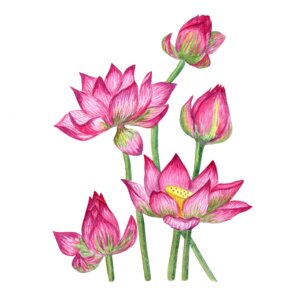
Nagarjuna's Praises
The Tibetan Tengyur identifies eighteen works of praise by Nagarjuna, and this praise is generally directed at Buddha Shakyamuni.
Paperback | eBook
$29.95 - Paperback
Translated and introduced by Karl Brunnholzl
While most of Nagarjuna's praises are directed to Buddha Shakyamuni, the main work of Nagarjuna's praises we have in English is the Dharmadhatustava, translated as In Praise of Dharmadhatu, and this work directs praise instead at the ultimate nature of mind. Karl Brunnhölzl's translation, which includes an in-depth introduction to Nagarjuna and his works in general and this one specifically, also contains a commentary by the Third Karmapa Rangjung Dorje.
The text shows how our buddha nature is obscured by stains but also how the stains can be removed by following the path of the Mahayana and can be fully revealed as buddhahood. Rangjung Dorje's commentary is also of particular interest because even though he is known for his shentong views, this commentary shows how his actual understanding is far more subtle than scholars have sometimes supposed and is in fact an elegant synthesis of the two great streams of the Mahayana, Madhyamaka, and Yogacara.
Paperback | eBook
$49.95 - Paperback
Translated and introduced by Karl Brunnholzl
Three other praises of Nagarjuna's are included in the collection Straight from the Heart, also translated and introduced by Karl Brunnhölzl</a>. Interestingly, in these praises, Nagarjuna often refers to buddhahood in positive terms, in contrast to much of his other work, which deconstructs any possibility of phenomena truly existing. As Brunnhölzl points out, despite there being nothing to pinpoint in the dharmadhatu as the nature of the mind, it can still be experienced directly and personally in a non-referential way. In other words, enlightenment is not some empty, dark nothingness, but wide-awake awareness of mind completely free from reference points.
Nagarjuna's Advice
There are seven texts included in the advice category. The two most famous are the Suhrllekha, or Letter to a Friend, and the Ratnavali, or Nagarjuna's Precious Garland: Buddhist Advice for Living and Liberation.
Paperback | eBook
$24.95 - Paperback
Nagarjuna's Letter to a Friend: With Commentary by Kangyur Rinpoche
Translated by the Padmakara Translation Group
Letter to a Friend is a set of verses of advice to a king whose identity is uncertain but who was most likely one of a number of kings in present-day Andhra Pradesh. There are several translations of Letter to a Friend, the most recent one being by the Padmakara Translation Group, which includes a commentary by Kyabje Kangyur Rinpoche.
The 123 verses are some of the most frequently quoted lines in all of Tibetan Buddhism and are taught often to this day. The text covers the entire Mahayana path, fusing daily conduct with the framework of stages that lead beings to fully enlightened buddhahood. It makes the entire path totally accessible to laypeople, demonstrating how to completely immerse oneself in the spiritual life while still living in society.
Paperback | eBook
$27.95 - Paperback
Translated by Jeffrey Hopkins
Precious Garland has been categorized by some as belonging among Nagarjuna's works on reasoning, but more traditionally it is part of the advice collection.
In the Precious Garland, he offers intimate counsel on how to conduct one's life and how to construct social policies that reflect Buddhist ideals. The advice for personal happiness is concerned first with improving one's condition over the course of lifetimes, and then with release from all kinds of suffering, culminating in Buddhahood. Nagarjuna describes the cause and effect sequences for the development of happiness within ordinary life, as well as the practices of wisdom, realizing emptiness, and compassion that lead to enlightenment. He describes a Buddha's qualities and offers encouraging advice on the effectiveness of practices that reveal the vast attributes of Buddhahood. In his advice on social and governmental policy, Nagarjuna emphasizes education and compassionate care for all living beings. He also objects to the death penalty. Calling for the appointment of government figures who are not seeking profit or fame, he advises that a selfish motivation will lead to misfortune. The book includes a detailed analysis of attachment to sensual objects as a preparation for realization of the profound truth that, when realized, makes attachment impossible.
Nagarjuna on Tantra
The one work we have is not actually by Nagarjuna but the basis for it is Nagarjuna's Piṇḍīkramaḥ and the Sūtramelāpakam.
Guhyasamaja Practice in the Arya Nagarjuna System, Volume One: The Generation Stage
by Gyumé Khensur Lobsang Jampa, translated by Artemus Engle
The Guhyasamāja Tantra is one of the Unexcelled Yoga Tantras of Vajrayana Buddhism. In the initial, generation-stage practice, one engages in a prescribed sequence of visualizations of oneself as an enlightened being in a purified environment in order to prepare one’s mind and body to engage in the second stage: the completion stage. The latter works directly with the subtle energies of one’s mind and body and transforms them into the enlightened mind and body of a buddha. In this book, Gyumé Khensur Lobsang Jampa, a former abbot of Gyumé Tantric College, provides complete instructions on how to practice the generation stage of Guhyasamāja, explaining the visualizations, offerings, and mantras involved, what they symbolize, and the purpose they serve. These instructions, which are usually imparted only orally from master to student after the student has been initiated into the Guhyasamāja mandala, are now being published in English for the first time and are supplemented by extracts from key written commentaries in the footnotes to support practitioners who have received the required transmissions from a holder of this lineage. The complete self-generation ritual is included in the second part of the book, with the Tibetan on facing pages, which can be used by those who read Tibetan and want to recite the ritual in Tibetan.
Hardcover | eBook
$49.95 - Hardcover
Subsequent Commentaries by Great Indian and Tibetan Masters
There are of course so many commentaries and commentaries on commentaries for Nagarjuna's work, by masters including the following:
...and many more great teachers up to the present. Several of these are included in subsequent Great Masters Series articles.
Recent works on Madhyamaka
Other Works and Resources
Paperback | eBook
$19.95 - Paperback
The Prince and the Zombie: Tibetan Tales of Karma
By Tenzin Wangmo, foreword by Matthieu Ricard
One last book should be mentioned here, as it's a bit of a leap from the traditional texts by and literature about Nagarjuna. The Prince and the Zombie: Tibetan Tales of Karma by Tenzin Wangmo is a book based on Tibetan oral folktale traditions.
In this book,was published in the spring of 2015, a young prince encounters Nagarjuna, who guides him and gives him the task of bringing a zombie-that's really the best translation available-back from one of the great charnel grounds of India. It is a story full of magic and excitement and could serve as a brief vacation for the mind in between studying verses on emptiness!
Discover Related Reader's Guides on the Great Masters
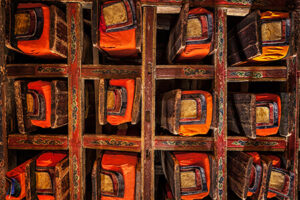
The Thirteen Core Indian Buddhist Texts: A Reader's Guide
There are thirteen classics of Indian Mahayana philosophy, still used in Tibetan centers of education throughout Asia and beyond, particularly the Nyngma tradition, with overlap with the others. They cover the subjects of vinaya, abhidharma, Yogacara, Madhyamika, and the path of the Bodhisattva. They are some of the most frequently quoted texts found in works written from centuries ago to today. Below is a reader's guide to these works.
Khenpo Shenga, who penned influential commentaries on all 13 texts.
1. Pratimokṣha Sūtra
The first text is the Sutra for Individual Liberation or Sutra of the Discipline or Pratimokṣha Sūtra from the Buddha, containing all the precept for monastics. We have a commentary of the Bhiksuni Pratimoksha Sutra, Choosing Simplicity.
Related Books
$24.95 - Paperback
By: Thubten Chodron & Bhikshuni Jendy & Venerable Bhikshuni Master Wu Yin
2. The Vinayasutra by Gunaprabha
The second text is the Vinayasutra by Gunaprabha (7th century) who was a student of Vasubandhu. According to Ringu Tulku's The Ri-me Philosopy of Jamgon Kongtrul the Great, "Vasubandhu had many great students, and four of them were considered to be better than himself; Gunaprabha was the one who was better in the Vinaya. Gunaprabha put the four sections of the Vinaya into the proper order, and condensed the seventeen topics of the Vinaya into a shorter format; this is called the Vinaya Root Discourse. He wrote another text called the Discourse of One Hundred Actions, which gives practical instructions on activities related to the Vinaya."
3. The Compendium of Abhidharma or the Abhidharmasamuccaya by Asanga
This work on abhidharma does exist in a full, if somewhat dated English translation by Walpola Rahula. There is an excellent commentary on it by Traleg Rinpoche, published by KTD, Asangha's Abhidharmasamuccaya.
4. The Abhidharmakosha by Vasubandhu
Vasubhandu's Abhidharmakosha is the Hinayana treatise on abhidharma and is translated in Jewels from the Treasury which also includes the commentary by the Ninth Karmapa, Wangchuk Dorje.
$24.95 - Paperback
By: Thubten Chodron & Bhikshuni Jendy & Venerable Bhikshuni Master Wu Yin
5. The Root Stanzas of the Middle Way or Mulamadhyamakakarika
Nagarjuna most famous work, The Root Stanzas of the Middle Way or Mulamadhyamaka-karika is the first work on Madhyamyaka. The Root Stanzas holds an honored place in all branches of Tibetan Buddhism, as well as in the Buddhist traditions found in China, Japan, and Korea, because of the way it develops the seminal view of emptiness (shunyata), which is crucial to understanding Mahayana Buddhism and central to its practice.
The latest translation of the text, by the esteemed team of the Padmakara Translation Group, translated this for the occasion of His Holiness the Dalai Lama's visit to Dordogne, France. This version includes the Tibetan text.
In a concise presentation of this, its translator said, "It is important to see that in his explanations, or rather presentations, of the Middle Way, Nāgārjuna is formulating neither a religious doctrine nor a philosophical theory. He is not giving us yet another description of the world. He simply points to phenomena—the things of our experience that appear so vividly and function so effectively—and shows by force of reasoned argument that they cannot possibly exist in the way that they appear to exist, and that, in truth, they can be said neither to exist nor not to exist. Existence and nonexistence, however, form a perfect dichotomy. And since phenomena are said to lie in neither of these two ontological extremes, we are forced to the conclusion that their nature is ineffable. It cannot be spoken of or even conceived of. And yet it cannot be nothing—for how can anyone possibly deny the vivid experience of the phenomenal world? And thus we come to the nub of the question: How is the true nature of phenomena to be understood? How are we to lay hold of, or rather enter into, the kind of wisdom that, by revealing the emptiness of phenomena, is alone able to uproot our clinging to their apparent reality and thereby dissipate the tyrannical power that they have over us?"
The Root Stanzas of the Middle Way
$29.95 - Hardcover
By: Christine Downing & Heinrich Dumoulin & Nagarjuna & Padmakara Translation Group
6. The Introduction to the Middle Way or Madhyamakavatara
Chandrakirti's Introduction to the Middle Wayor Madhyamakavatara. This book includes a verse translation of the Madhyamakavatara by the renowned seventh-century Indian master Chandrakirti, an extremely influential text of Mahayana Buddhism, followed by an exhaustive logical explanation of its meaning by the modern Tibetan master Jamgön Mipham, composed approximately twelve centuries later. Chandrakirti's work is an introduction to the Madhyamika teachings of Nāgārjuna, which are themselves a systematization of the Prajnaparamita, or "Perfection of Wisdom" literature, the sutras on the crucial, but elusive concept of emptiness.
Introduction to the Middle Way
$32.95 - Paperback
By: Chandrakirti & Jamgon Mipham & Padmakara Translation Group
7. The Four Hundred Stanzas or Chatuḥshataka Shastra
Aryadeva's Four Hundred Stanzasor Chatuḥshataka shastra was written to explain how, according to Nāgārjuna, the practice of the stages of yogic deeds enables those with Mahayana motivation to attain Buddhahood. Both Nāgārjuna and Aryadeva urge those who want to understand reality to induce direct experience of ultimate truth through philosophic inquiry and reasoning.
Aryadeva's text is more than a commentary on Nāgārjuna's Treatise on the Middle Way because it also explains the extensive paths associated with conventional truths. The Four Hundred Stanzas is one of the fundamental works of Mahayana Buddhist philosophy, and Gyel-tsap Je's commentary is arguably the most complete and important of the Tibetan commentaries on it.
Mahayana practitioners must eliminate not only obstructions to liberation, but also obstructions to the perfect knowledge of all phenomena. This requires a powerful understanding of selflessness, coupled with a vast accumulation of merit, or positive energy, resulting from the kind of love, compassion, and altruistic intention cultivated by bodhisattvas. The first half of the text focuses on the development of merit by showing how to correct distorted ideas about conventional reality and how to overcome disturbing emotions. The second half explains the nature of ultimate reality that all phenomena are empty of intrinsic existence. Gyel-tsap's commentary on Aryadeva's text takes the form of a lively dialogue that uses the words of Aryadeva to answer hypothetical and actual assertions questions and objections. Geshe Sonam Rinchen has provided additional commentary to the sections on conventional reality, elucidating their relevance for contemporary life.
Aryadeva's Four Hundred Stanzas on the Middle Way
$39.95 - Paperback
By: Aryadeva & Gyel-tsap & Geshe Sonam Rinchen
8. The Way of the Bodhisattva or Bodhicharyavatara
The Bodhicharyavatara, or The Way of the Bodhisattva, composed by the eighth-century Indian master Shantideva, has occupied an important place in the Tibetan Buddhist tradition throughout its history. It is a guide to cultivating the mind of enlightenment through generating the qualities of love, compassion, generosity, and patience.
We have a lot of resources on this site for this text - you can start with Way of the Bodhisattva Resource Page. In particular, we strongly recommend watching the immersive workshop from May of 2016 with esteemed translator Wulstan Fletcher who is part of the Padmakara Translation Group.
In addition, we have the famous commentary on this text, The Nectar of Manjusri's Speech. In this commentary, Kunzang Pelden has compiled the pith instructions of his teacher Patrul Rinpoche, the celebrated author of The Words of My Perfect Teacher.
$21.95 - Paperback
By: Khenpo Tsewang Dongyal Rinpoche & Khenpo Tsewang Dongyal & Patrul Rinpoche & Khenchen Palden Sherab
A Guide to The Words of My Perfect Teacher
$34.95 - Paperback
The Five Maitreya Texts
And then there are the five Maitreya texts that he imparted to Asanga. For an explanation of these texts see two of the foremost translators of them explain them in this pair of interviews with Karl Brunnnholzl and Thomas Doctor.
9. The Ornament of Clear Realization or Abhisamayalankara
The Abhisamayalamkara summarizes all the topics in the vast body of the Prajnaparamita Sutras. Resembling a zip-file, it comes to life only through its Indian and Tibetan commentaries. Together, these texts not only discuss the "hidden meaning" of the Prajnaparamita Sutras—the paths and bhumis of sravakas, pratyekabuddhas, and bodhisattvas—but also serve as contemplative manuals for the explicit topic of these sutras—emptiness—and how it is to be understood on the progressive levels of realization of bodhisattvas. Thus these texts describe what happens in the mind of a bodhisattva who meditates on emptiness, making it a living experience from the beginner's stage up through buddhahood.
Gone Beyondcontains the first in-depth study of the Abhisamayalamkara (the text studied most extensively in higher Tibetan Buddhist education) and its commentaries in the Kagyu School. This study (in two volumes) includes translations of Maitreya's famous text and its commentary by the Fifth Shamarpa Goncho Yenla (the first translation ever of a complete commentary on the Abhisamayalamkara into English), which are supplemented by extensive excerpts from the commentaries by the Third, Seventh, and Eighth Karmapas and others. Thus it closes a long-standing gap in the modern scholarship on the Prajnaparamita Sutras and the literature on paths and bhumis in Mahayana Buddhism.
Groundless Pathstakes the same material and looks at in the context of the Nyingma School of Tibetan Buddhism. This study consists mainly of translations of Maitreya's famous text and two commentaries on it by Patrul Rinpoche. These are supplemented by three short texts on the paths and bhumis by the same author, as well as extensive excerpts from commentaries by six other Nyingma masters, including Mipham Rinpoche. Thus this book helps close a long-standing gap in the modern scholarship on the prajñaparamita sutras and the literature on paths and bhumis in Mahayana Buddhism.
10. Ornament of the Great Vehicle Sūtras or Mahayanasutralankara
The Ornament of the Great Vehicle Sūtrasor Mahayanasutralankara
The Ornament provides a comprehensive description of the bodhisattva’s view, meditation, and enlightened activities. Bodhisattvas are beings who, out of vast love for all sentient beings, have dedicated themselves to the task of becoming fully awakened buddhas, capable of helping all beings in innumerable and vast ways to become enlightened themselves. To fully awaken requires practicing great generosity, patience, energy, discipline, concentration, and wisdom, and Maitreya’s text explains what these enlightened qualities are and how to develop them.
This volume includes commentaries by Khenpo Shenga and Ju Mipham, whose discussions illuminate the subtleties of the root text and provide valuable insight into how to practice the way of the bodhisattva. Drawing on the Indian masters Vasubandhu and, in particular, Sthiramati, Mipham explains the Ornament with eloquence and brilliant clarity. This commentary is among his most treasured works.
Ornament of the Great Vehicle Sutras
$69.95 - Hardcover
By: Dharmachakra Translation Committee & Asanga & Jamgon Mipham & Maitreya & Khenpo Shenga
11. Middle beyond Extremes or the Madhyāntavibhāga
Middle Beyond Extremes contains a translation of the Buddhist masterpiece Distinguishing the Middle from Extremes. This famed text, often referred to by its Sanskrit title, Madhyāntavibhāga, is part of a collection known as the Five Maitreya Teachings. Maitreya, the Buddha’s regent, is held to have entrusted these profound and vast instructions to the master Asaṅga in the heavenly realm of Tuṣita.
$22.95 - Paperback
By: Dharmachakra Translation Committee & Asanga & Jamgon Mipham & Ju Mipham & Maitreya & Khenpo Shenga
12. Distinguishing Phenomena from Their Intrinsic Nature -Dharmadharmatavibhanga
We have three works that explore this text.
Outlining the difference between appearance and reality, Distinguishing Phenomena from Their Intrinsic Nature shows that the path to awakening involves leaving behind the inaccurate and limiting beliefs we have about ourselves and the world around us and opening ourselves to the limitless potential of our true nature. By divesting the mind of confusion, the treatise explains, we see things as they actually are. This insight allows for the natural unfolding of compassion and wisdom. This volume includes commentaries by Khenpo Shenga and Ju Mipham, whose discussions illuminate the subtleties of the root text and provide valuable insight into the nature of reality and the process of awakening.
Mining Wisdom from Delusion
The introduction of the book discusses these two topics (fundamental change and non-conceptual wisdom) at length and shows how they are treated in a number of other Buddhist scriptures. The three translated commentaries, by Vasubandhu, the Third Karmapa, Rangjung Dorje, and Gö Lotsāwa, as well as excerpts from all other available commentaries on Maitreya’s text, put it in the larger context of the Indian Yogācāra School and further clarify its main themes. They also show how this text is not a mere scholarly document, but an essential foundation for practicing both the sūtrayāna and the vajrayāna and thus making what it describes a living experience. The book also discusses the remaining four of the five works of Maitreya, their transmission from India to Tibet, and various views about them in the Tibetan tradition.
Distinguishing Phenomena and Pure Beingwas composed by Maitreya during the golden age of Indian Buddhism. Mipham's commentary supports Maitreya's text in a detailed analysis of how ordinary, confused consciousness can be transformed into wisdom. Easy-to-follow instructions guide the reader through the profound meditation that gradually brings about this transformation.
Distinguishing Phenomena from Their Intrinsic Nature
$24.95 - Hardcover
By: Dharmachakra Translation Committee & Asanga & Jamgon Mipham & Ju Mipham & Maitreya & Khenpo Shenga
Mining for Wisdom within Delusion
$39.95 - Hardcover
By: Coleman Barks & Karl Brunnholzl & Asanga & Maitreya & Mohammad Ali Jamnia & The Third Karmapa
Maitreya's Distinguishing Phenomena and Pure Being
$24.95 - Paperback
By: Asanga & Jamgon Mipham & Jim Scott
13. Treatise on the Sublime Continuum or the Uttaratantra Shastra
The Treatise on the Sublime Continuum or the Uttaratantra Shastra presents the Buddha's definitive teachings on how we should understand this ground of enlightenment and clarifies the nature and qualities of buddhahood. A major focus is “Buddha nature” (tathāgatagarbha), the innate potential in all living beings to become a fully awakened Buddha.
We have two books on this work.
The first is When the Clouds Part: The Uttaratantra and Its Meditative Tradition as a Bridge between Sutra and Tantra. This book discusses a wide range of topics connected with the notion of buddha nature as presented in Indo-Tibetan Buddhism and includes an overview of the sūtra sources of the tathāgatagarbha teachings and the different ways of explaining the meaning of this term. It includes new translations of the Maitreya treatise Mahāyānottaratantra (Ratnagotravibhāga), the primary Indian text on the subject, its Indian commentaries, and two (hitherto untranslated) commentaries from the Tibetan Kagyü tradition. Most important, the translator’s introduction investigates in detail the meditative tradition of using the Mahāyānottaratantra as a basis for Mahāmudrā instructions and the Shentong approach. This is supplemented by translations of a number of short Tibetan meditation manuals from the Kadampa, Kagyü, and Jonang schools that use the Mahāyānottaratantra as a work to contemplate and realize one’s own buddha nature.
The second title, Buddha Nature, includes commentaries by Jamgon Kongtrul Lodro Thaye and Khenpo Tsultrim Gyatso.
$22.99 - eBook
By: Lenore Friedman & Rosemarie Fuchs & Jamgon Kongtrul Lodro Taye & Keiko Matsui Gibson
And One More
As Georges Dreyfus notes in his The Sound of Two Hands Clapping, there is another core text that is often included in this group, for example at Namdroling: Shantarakshita's Adornment of the Middle Way including Mipham Rinpoche's commentary.
The Adornment of the Middle Way
$39.95 - Paperback
By: Jamgon Mipham & Padmakara Translation Group & Shantarakshita

The Dalai Lama's Teaching on Stages of Meditation
His Holiness the Dalai Lama's visit to Boston
His Holiness the Dalai Lama gave an excellent teaching on Kamalashila's Stages of Meditation at MIT.
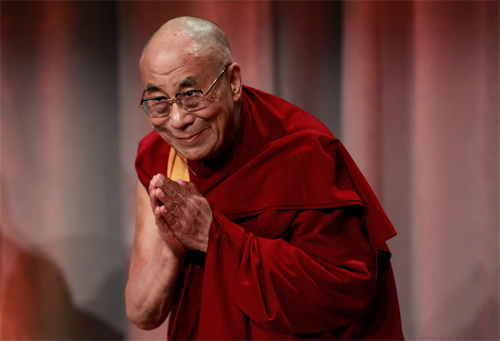
Below are the texts mentioned by His Holiness in his talk. For those interested in going deeper, you will find them complementary to the teaching:
- Stages of Meditation - A commentary on Kamalashila's work by the Dalai Lama
- Shantideva's Way of the Bodhisattva
- Aryadeva's 400 Stanzas of the Middle Way
- Nagarjuna's Letter to a Friend
You can also visit the Dalai Lama's website to learn more or click photos and videos to see footage from his events.
Related Books
Aryadeva's Four Hundred Stanzas on the Middle Way
$39.95 - Paperback
By: Aryadeva & Gyel-tsap & Geshe Sonam Rinchen
Nagarjuna's Letter to a Friend
$24.95 - Paperback
By: Kangyur Rinpoche & Longchen Yeshe Dorje, Kangyur Rinpoche & Nagarjuna & Padmakara Translation Group



